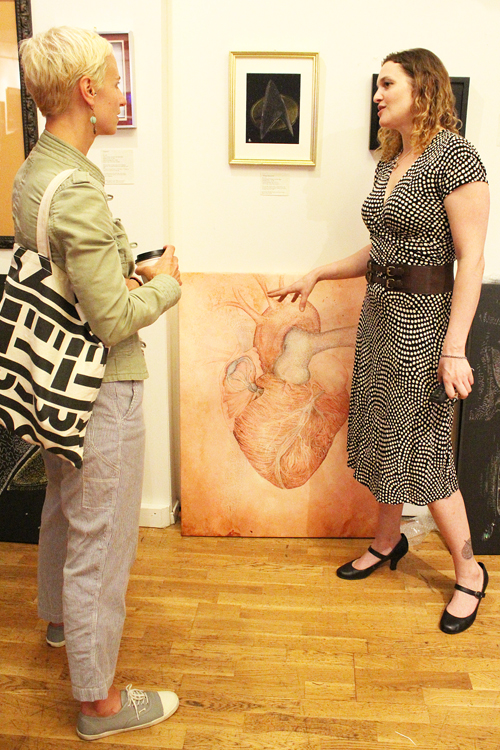Sienna Morris started drawing with numbers in 2008. She called it “Numberism,” a term she coined herself. Morris incorporates mathematical formulas into her paintings. She uses math to make art, which may sound odd, but her pieces are truly breathtaking.
Paint by numbers

Sienna Morris started drawing with numbers in 2008. She called it “Numberism,” a term she coined herself. Morris incorporates mathematical formulas into her paintings. She uses math to make art, which may sound odd, but her pieces are truly breathtaking.
When asked if she had a favorite equation to draw, Morris paused before scrambling for a piece of paper and a Sharpie and writing out a complicated formula called the Drake equation, developed by astronomer and astrophysicist Frank Drake and expanded upon by scientist Carl Sagan. In essence, it estimates the probability of intelligent life in the cosmos.
“It all depends on the variables you put in, and you get different outcomes,” Morris explained.
“Most people don’t associate math with beauty. Artists are always trying to tell a story. I’m using math to tell a better story. I realized that I can use these equations as a tool. The first thing I did was the Fibonacci sequence and actually showed it as snail,” Morris said.
Many of the formulas she uses in her works are advanced and challenging. Asked which is hardest, Morris said, “Probably…Einstein’s field equations, because they’re so complex and it’s hard to wrap my head around them.”
While the equations are humbling, the piece featuring them, Universal Proprioception, is one of her most stunning.
“Proprioception is the physical identity of the self,” Morris explained. “Applied to the universe, ‘universal proprioception’ is the desire to know the universe as you know yourself, and vice versa.”
The mathematic and scientific equations can be challenging, but Morris has had guidance in times of need.
“I’m offered perspective. I get to meet geniuses. I’ve met people who work at CERN [the European Organization for Nuclear Research] and NASA. They help guide me. Usually, though, I take the path of least resistance,” she said, laughing.
Not only does Morris get advice from experts in the math and science fields, she has become one herself: Several local teachers are using Numberism in their art classes. Students interviewed her to learn how Numberism works and created their own drawings using numbers significant to them.
Morris’ downtown studio sits on a block with other small art studios. On the second night of a silent auction featuring her work, the whole block was awash with open galleries, street poets writing personalized poems for donations, musicians, even a pair of mimes. Her studio is small, but the walls are covered with her art and the floor is covered with prints. She’s gotten a good turnout for her auction and she’s sold a few big pieces, including a few limited editions.
Several of her original pieces sold the first night, including Reverse Entropy: Etched on glass, the piece depicts a woman holding an hourglass. The woman is made up of the numbers one through 12. At the center of the hourglass is the equation for the speed of light, where time ceases to exist. The space outside the hourglass is made up of the formula for imaginary numbers, representing a place where time doesn’t exist.
With the silent auction, “Making Room for the Brain,” Morris hopes to sell enough to be able to spend more time in the studio, drawing. If anyone were to inspect her work, it wouldn’t be too surprising why: her piece Cello took roughly 300 working hours to complete.
But the auction is not just to sell off her gallery; she is eager to start a new series based on the human body. She is, of course, starting with the brain.
“As an artist, it just makes sense to start with visual perception,” she said. “And the brain is how we perceive the world.”
After spending the last six months working on pieces set in space, she’s looking forward to spending the next six working on the brain. If one of her most popular pieces, Human Heart—which contains 16 different equations—is any indication, her new series is going to be a big success.
While her work is extraordinary to see in the studio, she always has a spot at the Portland Saturday Market, where many prints of her work are available for sale.
For more information on Sienna Morris and Numberism, visit fleetingstates.com.






